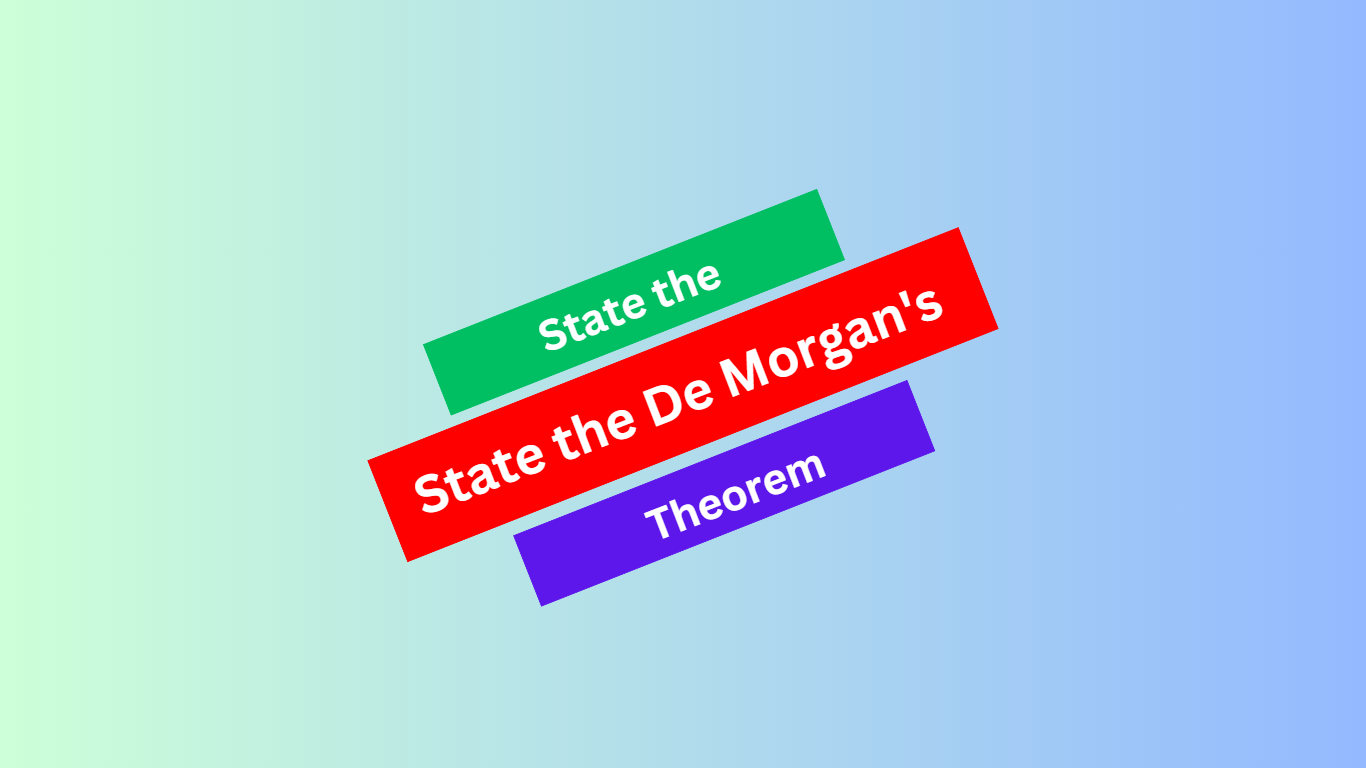The Complement of a Product
The first theorem states that the complement of a product of two numbers is equal to the sum of the complements of those numbers. In other words:
(A · B)’ = A’ + B’
This theorem allows us to simplify expressions involving products by converting them into sums. By taking the complement of the product and distributing it over the terms, we can eliminate the need for multiplication operations, resulting in a more streamlined expression.
Truth Table:
To illustrate the application of De Morgan’s Theorem, let’s examine the following truth table:
| A | B | A · B | (A · B)’ | A’ + B’ |
|---|---|---|---|---|
| 0 | 0 | 0 | 1 | 1 |
| 0 | 1 | 0 | 1 | 1 |
| 1 | 0 | 0 | 1 | 1 |
| 1 | 1 | 1 | 0 | 0 |
As we can see from the truth table, the values of (A · B)’ and A’ + B’ are equivalent for all possible combinations of A and B. This demonstrates the validity of De Morgan’s Theorem in practice.
The Complement of the Sum
The second theorem states that the complement of the sum of two numbers is equal to the product of the complements of those numbers. In other words:
(A + B)’ = A’B’
This theorem provides a similar simplification technique for expressions involving sums. By taking the complement of the sum and applying the distributive property, we can convert sums into products, leading to more concise and efficient expressions.
Truth Table:
Let’s examine the truth table below to understand the application of De Morgan’s Theorem in the case of the complement of the sum:
| A | B | A + B | (A + B)’ | A’B’ |
|---|---|---|---|---|
| 0 | 0 | 0 | 1 | 1 |
| 0 | 1 | 1 | 0 | 0 |
| 1 | 0 | 1 | 0 | 0 |
| 1 | 1 | 1 | 0 | 0 |
As seen from the truth table, the values of (A + B)’ and A’B’ are equivalent for all possible combinations of A and B, further validating the second theorem of De Morgan.
Applications in Digital Electronics
De Morgan’s Theorem plays a vital role in digital electronics, where Boolean algebra is extensively used for designing and analyzing digital circuits. By applying De Morgan’s Theorem, complex logic expressions can be simplified, leading to more efficient circuit designs with reduced component count and improved performance.
Digital circuits, such as logic gates and flip-flops, rely on Boolean algebra to process and manipulate binary data. De Morgan’s Theorem is used.
